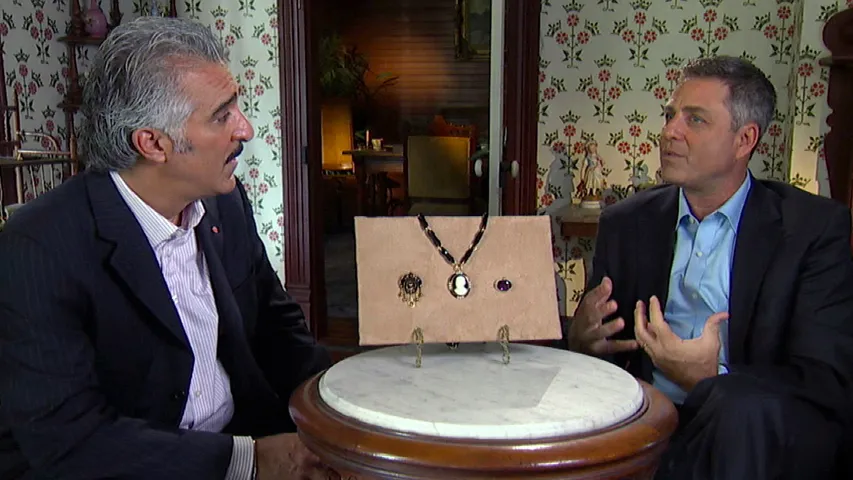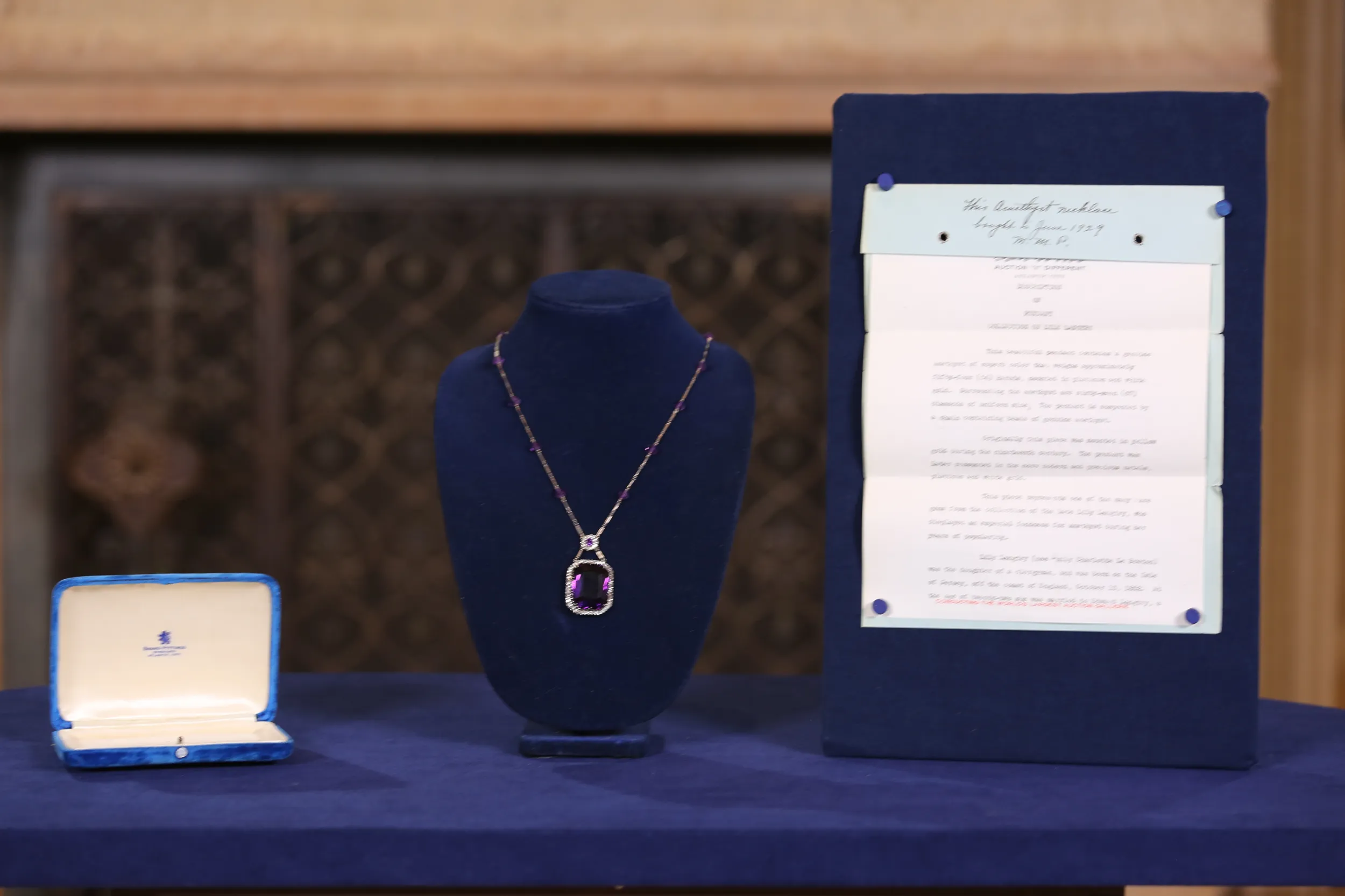GUEST: This necklace was passed down from my great-grandmother. My father had two spinster cousins--
APPRAISER: Right.
GUEST: --and people in the family felt sorry for them and passed all the jewelry and things like that to them. And when they died, my brother and I inherited all kinds of jewelry, but I fell in love with this lovely, small necklace. We auctioned off the other things and I brought that home.
APPRAISER: Well, you chose beautifully; it's a lovely necklace. It's in its original box and we've left it in, so people can see how beautifully the box was made to correspond to the shape of the jewel. But there's no maker's mark or retailer's mark on the box and there's no maker's mark on the necklace. I'm going to determine, based on the style, that it's English. I would date this about 1880, 1890. But what's so special about this necklace is the quality of the craftsmanship. This is one of the prettiest pieces I've seen coming out of England in that period. There are so many wonderful little details that are important in a fine piece of jewelry, for example, these wonderful amethysts, gorgeous color, surrounded by this beautiful, gold-leafing on the white enamel. The center has a rose-cut diamond, and then you've got your three beautiful amethyst drops, and each has a diamond star set right on the top, which was also part of the English vernacular in terms of the motifs that they used. You also have, around the stone, exquisite goldwork, even scalloping around the stones where the bezels should be. The little pearl drops. And you can get an idea of how beautifully it drapes, the swag, and how beautifully this would fit on the neck. This is a wonderful example. Everything is intact, there's nothing wrong with it. It's a ten out of a ten, and I would price this easily from $5,000 to $7,000.
GUEST: No kidding.
APPRAISER: No kidding.
GUEST: Oh, I don't believe that.
APPRAISER: It's true.
GUEST: Oh, my goodness.
APPRAISER: It's quite wonderful.









